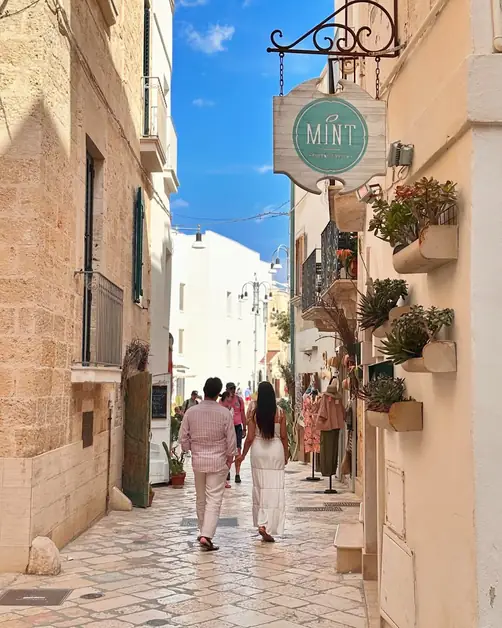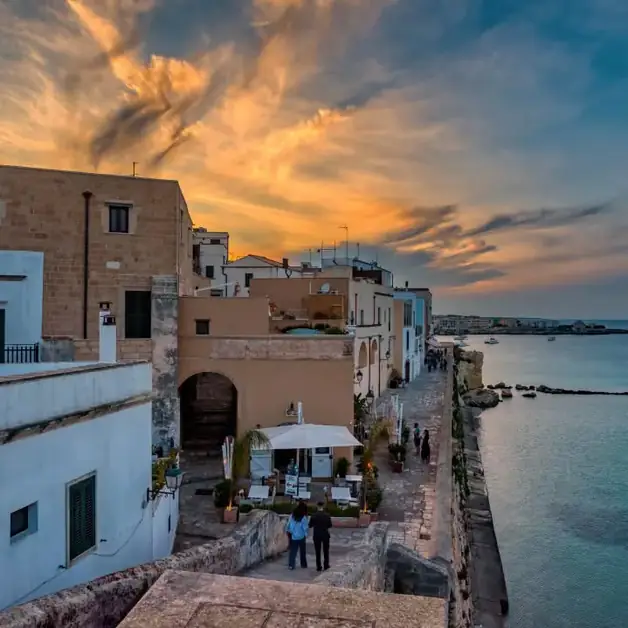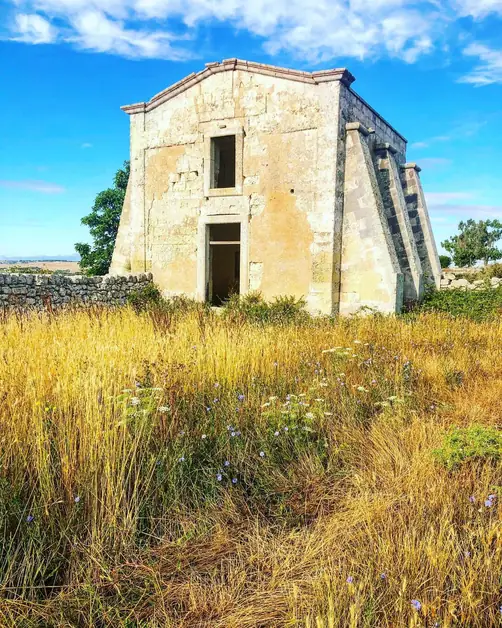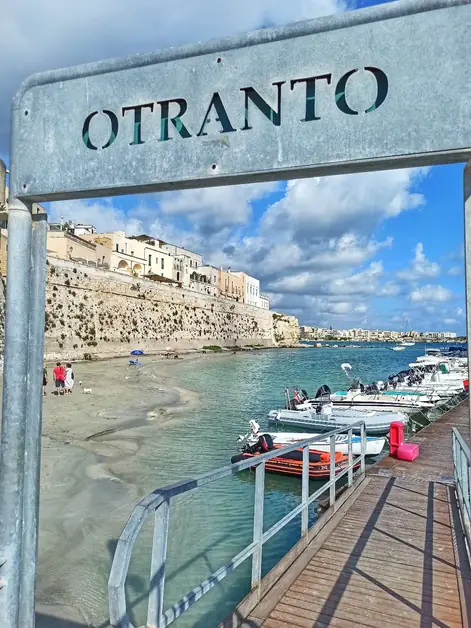The Otranto Mosaic and its Deep Meaning
The Otranto mosaic is a masterpiece that tells of salvation.
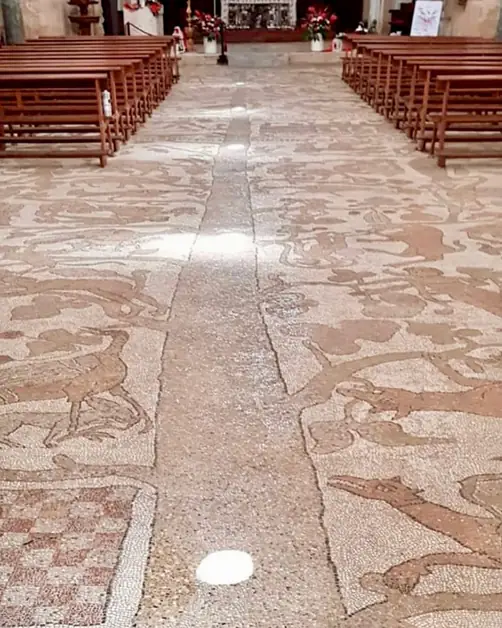
Why is the mosaic of the Cathedral of Otranto so famous?
The floor mosaic of the Cathedral of Otranto is one of the largest and best-preserved in Europe. It covers 592 square meters and dates back to the 12th century. Depictions of animals, myths, biblical episodes, and religious symbols intertwine in a unique work. It is a masterpiece that attracts thousands of visitors from all over the world every year.
Who created the floor mosaic of Otranto?
The mosaic was created by the presbyter Pantaleone, commissioned by Archbishop Gionata. Pantaleone signed the work with an inscription still visible today at the entrance of the Cathedral. He was probably linked to the Abbey of San Nicola di Casole, an advanced cultural center of the time. Although it is not certain, it is very likely that he studied there.
What does the mosaic in the Cathedral of Otranto represent?
The mosaic represents the path of man towards salvation. Among the main figures are the tree of life, the tree of evil, and the cycle of Adam and Eve. Next to these, there are mythological characters, medieval bestiaries, centaurs, unicorns, and scenes drawn from the Bible and Christian and Eastern culture.
What is the significance of the Tree of Life in the Otranto mosaic?
The Tree of Life is a central symbol. It represents the hope of salvation and the promise of eternal life. It appears alongside the Tree of Evil to show the duality between good and sin. The roots and branches intertwine with scenes rich in symbolic meaning.
Where is the mosaic located inside the Cathedral?
The mosaic extends over the floor of the central nave, the transept, and the presbytery. It accompanies the visitor along the entire internal path of the church. Each section of the floor has different scenes, but all are linked by a coherent narrative thread.
What do the scenes of Adam and Eve depict in the mosaic?
The cycle of Adam and Eve shows the creation, original sin, and the expulsion from paradise. They are represented in a simple style but with great symbolic strength. The narrative starts from the nave and continues to the presbytery, where the Tree of Life and that of sin contrast with each other.
What Eastern and fantastic elements are present in the mosaic?
In addition to Christian themes, the mosaic hosts figures that are Eastern, Moorish, and fantastic: dragons, winged lions, griffins, centaurs, cyclopes, and characters from Persian tradition. These elements make the mosaic a bridge between cultures, between East and West. A universal message that speaks to both believers and non-believers.
What impresses visitors about the mosaic in the Cathedral of Otranto?
The mosaic impresses with its size, richness of detail, symbolic depth, and exceptional state of preservation. Many visitors are enchanted by the work's ability to tell in images the journey of man towards God.
Can the entire mosaic be read as a story?
Yes. The mosaic can be read from left to right, like a step-by-step story, where each scene is a lesson. The images speak of life, faith, choice, good and evil, salvation and perdition. Pantaleone created a catechetical work, accessible even to those who could not read.
Where are the inscriptions that explain the mosaic located?
Inside the mosaic, there are four inscriptions in Latin. Two are at the entrance of the nave, and two in the presbytery area. These inscriptions indicate the name of the commissioner and the author, and some explain the theological meaning of the work.

